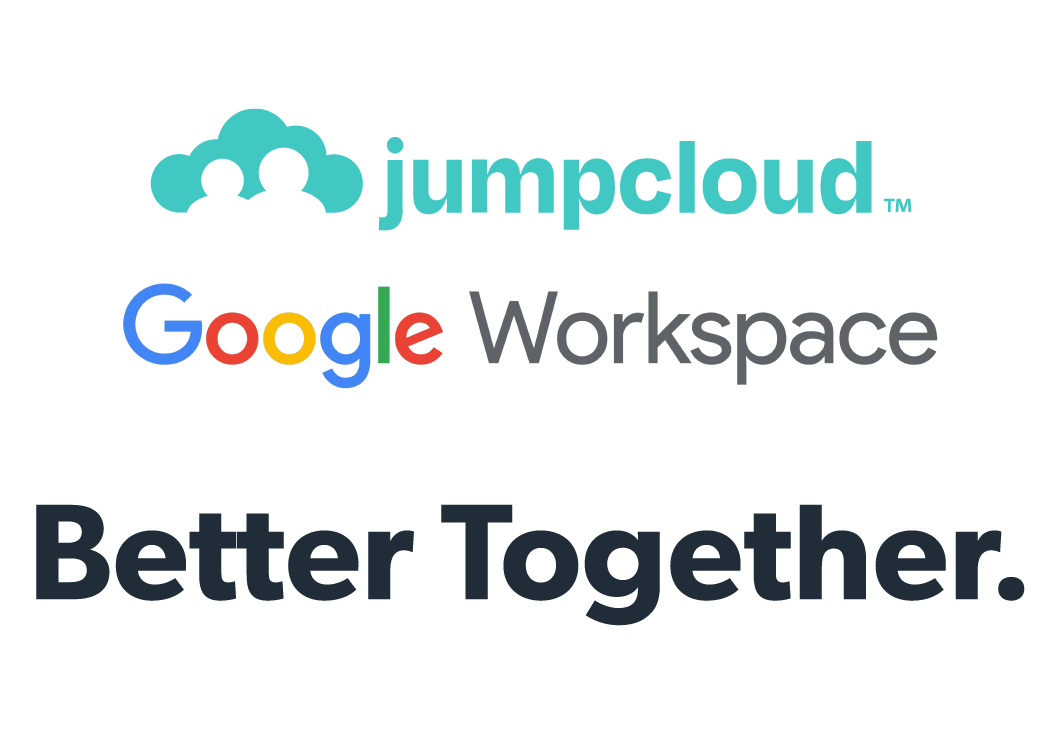Updated on December 19, 2024
LDAP (Lightweight Directory Access Protocol), OpenLDAP, and Microsoft Active Directory (AD) are similar because they’re are used to manage directories. That’s where the similarities end: LDAP is a protocol, and OpenLDAP and AD are software that support the LDAP protocol.
Vendors have created software implementations of LDAP that include tooling, interfaces, and other added functionality. OpenLDAP, which is a free, open source implementation of LDAP, is one of the most popular. Similarly, Microsoft AD is a comprehensive directory service for Windows networks that includes a software implementation of LDAP, among other protocols. AD is a legacy offering that needs modernization and protection, but remains in widespread use.
This article outlines the differences between the three and whether they’re the best options for modern IT infrastructures where requirements and risks have shifted. First, let’s explore how LDAP is a standardized protocol and how that makes it different from directory service software.
What’s the Difference Between LDAP, OpenLDAP, and Active Directory?
LDAP is a protocol; OpenLDAP and AD are software that make use of the LDAP protocol. To understand the differences between LDAP, OpenLDAP, and Active Directory, it helps to first understand the LDAP protocol.
LDAP is the protocol that defines how users, devices, and clients can communicate with a directory server. It also provides a framework for how information can be organized and represented within a directory. It facilitates user authentication and authorization to IT resources, which can include servers, applications, networks, file servers, and more.
These frameworks are flexible and customizable, so different directories can be formatted in various ways, but they tend to follow a hierarchical tree structure. (Learn more about LDAP directory structure in our full LDAP overview.)
With LDAP, users access IT resources by inputting credentials. The protocol searches and compares the credentials to what the LDAP server has stored for the authenticating user — if the username and password match what’s listed in the directory, LDAP authenticates the user. LDAP can centralize authentication services while providing users with quick access to many of their resources on the network.
The LDAP protocol is not software, but software packages have emerged to streamline LDAP directory creation, implementation, and management. One of the first implementations of this was OpenLDAP.
What Is the Difference Between LDAP vs. OpenLDAP?
OpenLDAP is a free, open source implementation of the LDAP protocol. Because it’s a common, free iteration available to anyone, OpenLDAP is sometimes referred to as just “LDAP.” However, it is more than just the protocol; it’s “light” LDAP directory software.
OpenLDAP can be used on any platform. In contrast to other implementations that offer more robust features like a GUI and often a suite of other protocols and functionalities (typically, at a cost), OpenLDAP is a highly focused LDAP option that’s customizable and supports all major computing platforms.
While this flexibility may sound like a plus (and it often is), having too much free rein can sometimes make the software more difficult to navigate. Some find this to be the case with OpenLDAP, particularly because it doesn’t have a GUI. As a result, it can require significant expertise to implement and manage.
What Is the Difference Between OpenLDAP vs. Active Directory?
AD is a directory service that stores user and device account data in a central location for Windows-based network, device, application, and file access.
AD is more feature-rich than OpenLDAP: it includes a GUI and more robust configuration features like Group Policy Objects for Windows devices. OpenLDAP only uses the LDAP protocol, but AD includes other protocols in addition to LDAP. For example, AD primarily leverages its proprietary implementation of Kerberos.
AD is more robust overall as a directory service, but OpenLDAP’s focus on the LDAP protocol gives it greater depth than AD when it comes to LDAP. The benefits include greater customization and flexibility in terms of schema modification and extension. It can be tailored to meet specific organizational needs without the restrictions often found in commercial products.
Overall, the commercial nature of Microsoft solutions means that it offers a wider breadth of functionality than OpenLDAP, which is an open source project. AD requires licensing, and because it runs on-premise equipment, the costs of AD hardware and maintenance can add up.
Which Should You Choose?
Small and medium-sized enterprises (SMEs) should determine whether they’re more interested in flexibility (OpenLDAP) or ease of use (AD) and compatibility with commercial products.
Notably, OpenLDAP offers better support for Linux-based systems and applications, networking gear, and NAS and SAN storage systems, which often use LDAP as their preferred protocol. Further, for organizations that leverage data centers or cloud Infrastructure-as-a-Service (IaaS) technology, leveraging an OpenLDAP server is often far more effective than AD.
AD has its advantages as well. Organizations that are largely Windows-based and intend to leverage only Azure cloud infrastructure can leverage Active Directory with Entra ID to access Microsoft’s Azure productivity services and security solutions. Microsoft has vertically integrated tools and services that can benefit some SMEs committed to its ecosystem.
Even in this case, though, many IT organizations opt to leverage OpenLDAP as well, because of Entra ID’s lack of LDAP support for IT infrastructure like network services.
The Main Reasons to Choose OpenLDAP
Many organizations opt for OpenLDAP for flexibility and cost savings. OpenLDAP is highly configurable for skilled engineers, making it a better choice for organizations with niche or nuanced needs. However, doing so raises administrative overhead and transition costs.
Additionally, it’s compatible with nearly every platform or OS, while AD works best with Windows devices. Organizations that use or plan to use Mac, Linux, or other systems often choose OpenLDAP. SMEs with legacy applications or those that are based on Linux will often also choose OpenLDAP.
The Main Reasons to Choose Active Directory
If your environment is fully homogenous and based only on Microsoft and Windows, AD might be the best choice. In a Windows environment, IT administrators can use the Windows-based Active Directory Users and Computers console to perform nearly all management tasks.
However, even in these environments, you still need to consider how to account for mobile and SaaS applications, Mac and Linux device support, non-Windows-based file servers, and networking gear, as AD generally does not support them without integrations or add-ons.
AD offers an easy-to-use GUI for configuring settings and managing users and groups. For those who are less experienced with configuring open source software, OpenLDAP’s lack of interface can be an uphill battle, making AD the better option.
While OpenLDAP and the LDAP protocol precede Microsoft’s entrance into the directory services space, Microsoft AD has obtained far greater market share (although, with the advent of cloud directories, the identity and access management (IAM) landscape is starting to shift).
Active Directory is More Popular
AD’s popularity, in combination with its more user-friendly suite of tools, can make it an attractive choice for Windows/Azure-centric organizations.
AD also offers more protocols than just LDAP while OpenLDAP is LDAP-exclusive. Multi-protocol directory services are growing in popularity as networks expand and disperse; companies need to authenticate users to a higher number and wider variety of resources, and different resources tend to work best with different protocols.
In environments with heavy reliance on cloud apps, SAML, OIDC, and SSO solutions are better suited. In this case, both AD and OpenLDAP require an additional IAM management tool.
AD also lacks modern security controls that could be used within a Zero Trust security strategy. For example, it doesn’t have multi-factor authentication (MFA), phishing resistance, or conditional access policies that take device posture into account for authentication decisions.
Ideally, an IAM tool or directory service should be able to authenticate and authorize users to all their IT resources, wherever they are (including the cloud), using whichever protocol best suits the task. This is one area where both OpenLDAP and AD fall short.
What Are the Limits of Active Directory and OpenLDAP?
OpenLDAP and AD both have their proponents, but they’re legacy systems and need other solutions around them to complete an organization’s cloud IAM architecture. That’s especially important when modern security threats are taken into consideration as well as the need for increased IT and end-user efficiency. IAM and device management go hand in hand.
First, both have usability issues. AD can become complex when expanded with add-ons like Entra ID and Intune to manage diverse and dispersed environments. Microsoft supports non-Windows platforms, but there is also the pull from within Microsoft to treat Windows and Azure as first-class citizens versus their competitors’ solutions. Its stack is deeply integrated.
OpenLDAP’s flexibility can be challenging and cause issues for the less tech-savvy. OpenLDAP server configuration can be complex, and it can be difficult to keep up with app dependencies, modify the directory data or schema, and maintain directory integrity as the business changes and scales. Managing the OpenLDAP infrastructure can also be challenging, especially as more organizations shift management of technology to cloud providers and SaaS vendors.
Usability and Compatibility Issues
While OpenLDAP can work in the cloud, it only uses the LDAP protocol. And although AD uses other protocols like Kerberos, it isn’t cloud-friendly on its own. To integrate with the cloud, organizations would need to use Entra ID. However, Entra ID is an entirely separate tool — and while it supports cloud resources, it doesn’t support on-premises functionality, like LDAP.
Neither AD or OpenLDAP can effectively adopt the protocols and cloud compatibility necessary to connect to all the resources users need for truly centralized user management. Rather, both function as tools within a multi-tool IAM system. This decentralized user management system can create inconsistencies, security vulnerabilities, and extra management work for IT teams.
A Better Option – JumpCloud’s Cloud Directory Platform
It comes as no surprise that the in-office business environment that’s fully on premise and operates with one OS is no longer the norm. Now, the legacy directory solutions built for those environments can’t meet the needs of modern business environments, which typically have multiple types of systems, resources, devices, and ways of working.
To solve these issues, many companies are turning to open directory platforms. With an open directory platform, IT admins no longer have to continually maintain an on-prem directory; they can use a cloud-based directory to securely connect users to all the resources they need, from anywhere and any trusted device. Legacy directories like AD can also be contained to reduce costs, reliance on Microsoft, and the security risks that are inherent with ADs continued use.
JumpCloud, in contrast to legacy solutions, offers a multi-protocol, cross-OS, and centralized user and device management system that can be managed through a centralized console.
When considering AD, OpenLDAP, and cloud-based open directory platforms — three of the most common directory service options — it’s important to consider your current infrastructure as well as where you want your organization to head.
An open directory platform could be right for your company if the following are true:
- You have mixed platforms, like Android, Mac, Linux, and Windows machines
- You leverage SaaS applications
- You leverage a cloud/hybrid-cloud infrastructure or IaaS, such as AWS, Google Workspace, GitHub, Dropbox, or others
- You support or plan to support remote, hybrid remote, or mobile work; cloud directories enable users to access the same IT resources from any location
With the JumpCloud open directory platform, for example, IT admins can connect user identities to the IT resources they need regardless of platform, provider, protocol, or location.
Try JumpCloud’s Cloud Directory
JumpCloud uses an OS-agnostic and multi-protocol approach, so you don’t have to switch your company’s established authentication solutions, devices, or applications in use today.
JumpCloud’s Open Directory Platform provides a smooth path to migrate off or modernize AD, once you’ve succeeded in aligning IT’s and management’s interests. Active Directory Integration (ADI) has configuration options that will enable you to determine where and how you want to manage users, groups, and passwords. It also provides a migration tool to transfer identities.
Cross-OS device management is a critical component to control and protect modern IT infrastructures. JumpCloud pairs the ability to manage every endpoint with an open directory platform to secure every identity and resource. This unified approach delivers strong access control while consolidating your tools for increased IT operational efficiency. Try JumpCloud for free and find out if it’s the right option for your organization’s journey away from AD.
Our customers tell us that asset management is also important for security and IT operations. JumpCloud is enhancing its platform to unify SaaS, IT security, and asset management.
Learn more about how admins will be able to consolidate security, asset, device, access, and identity management with JumpCloud and how those features go hand in hand.





